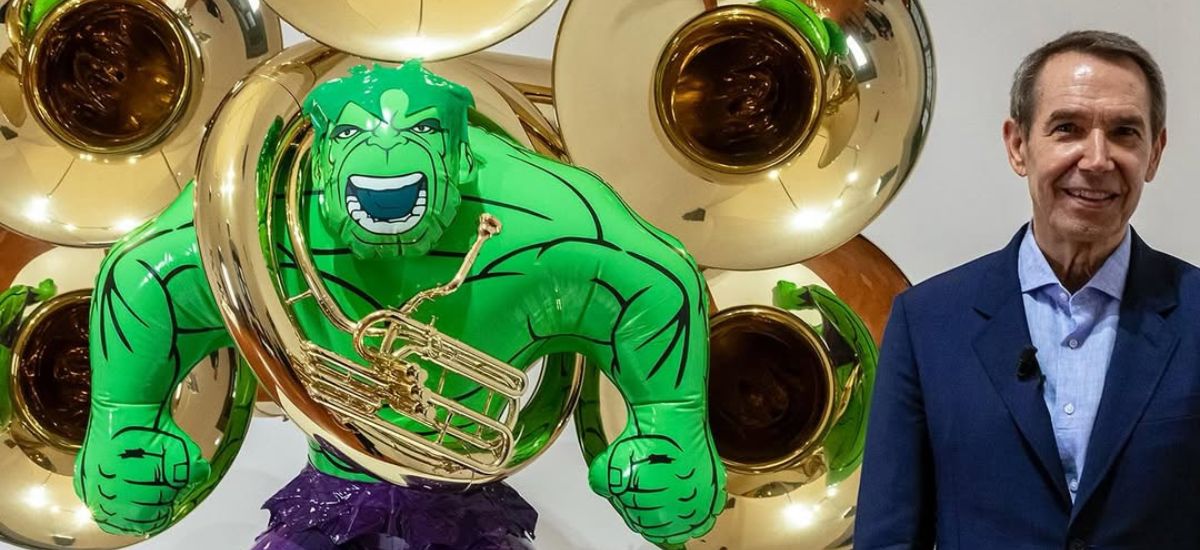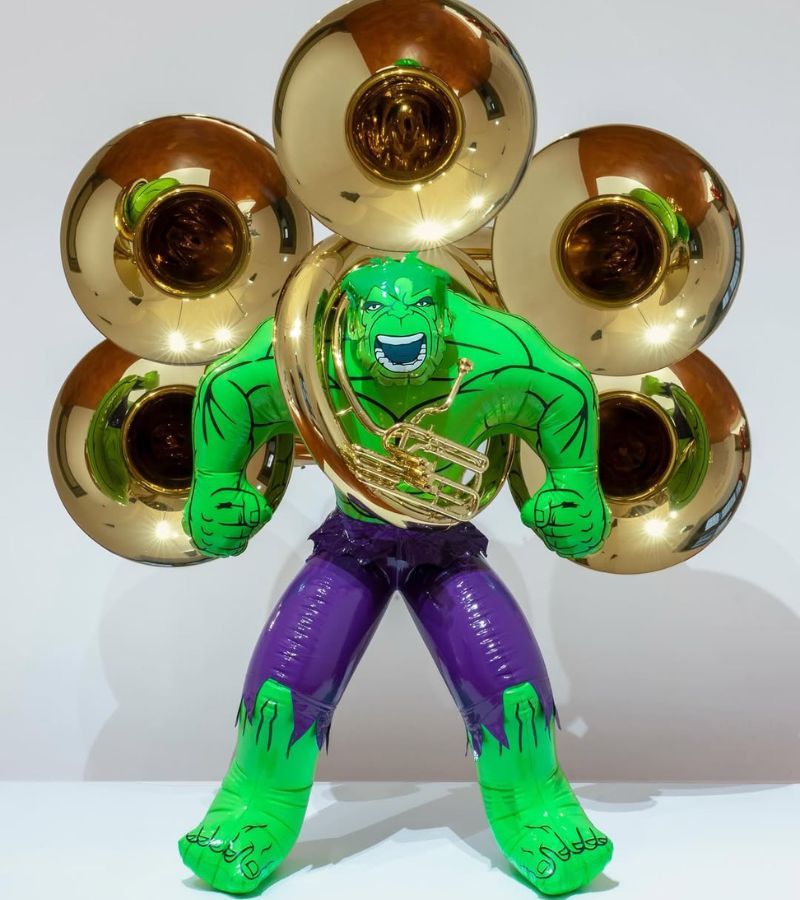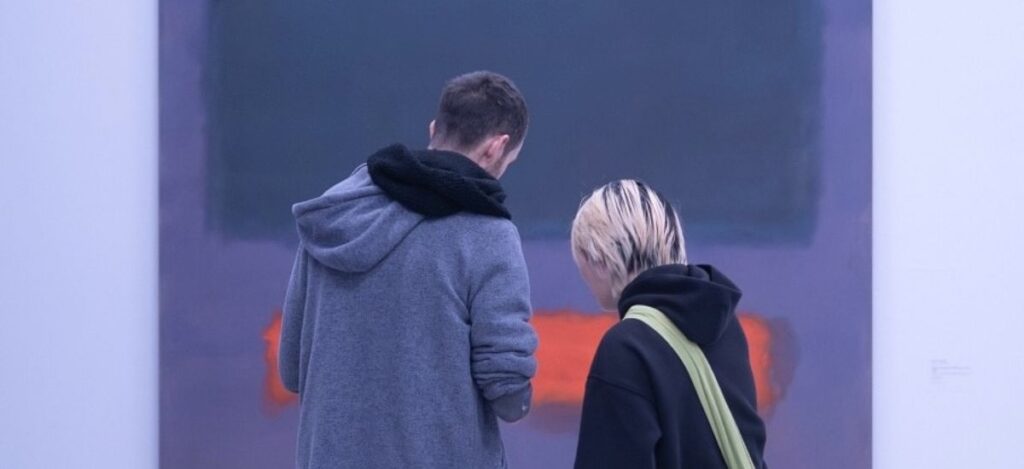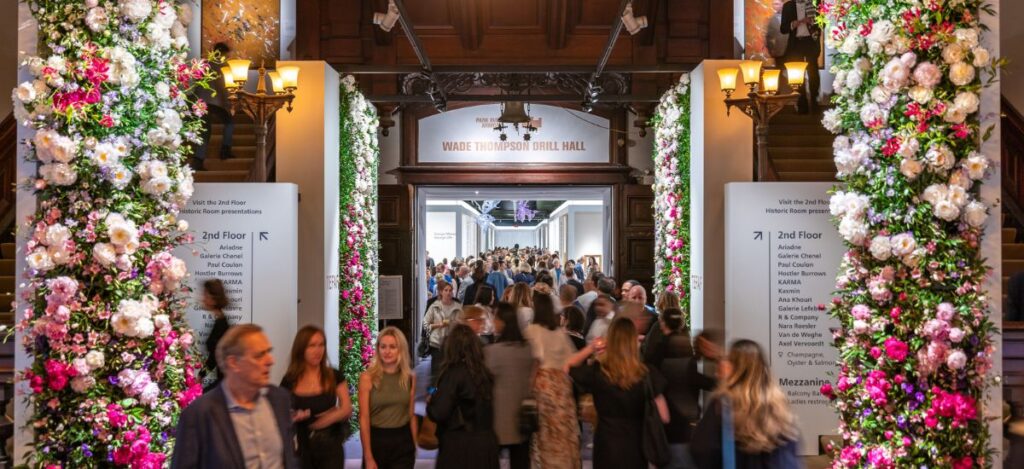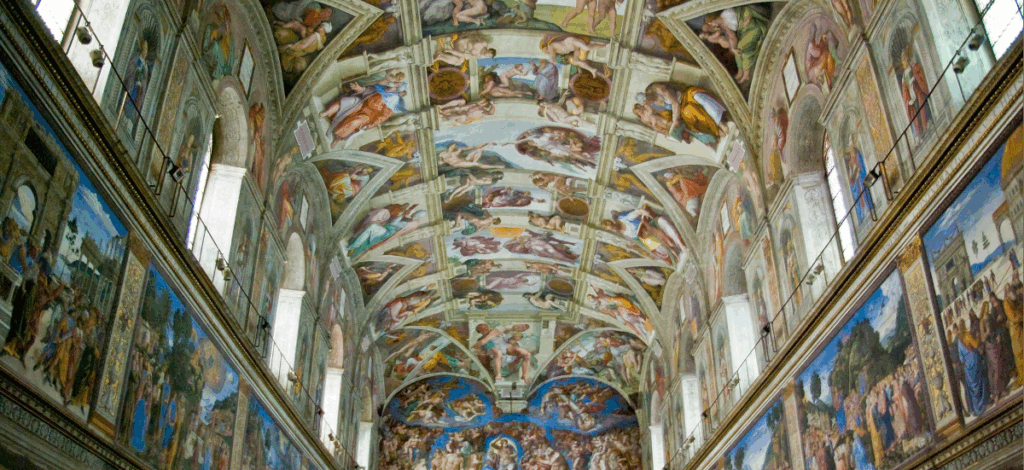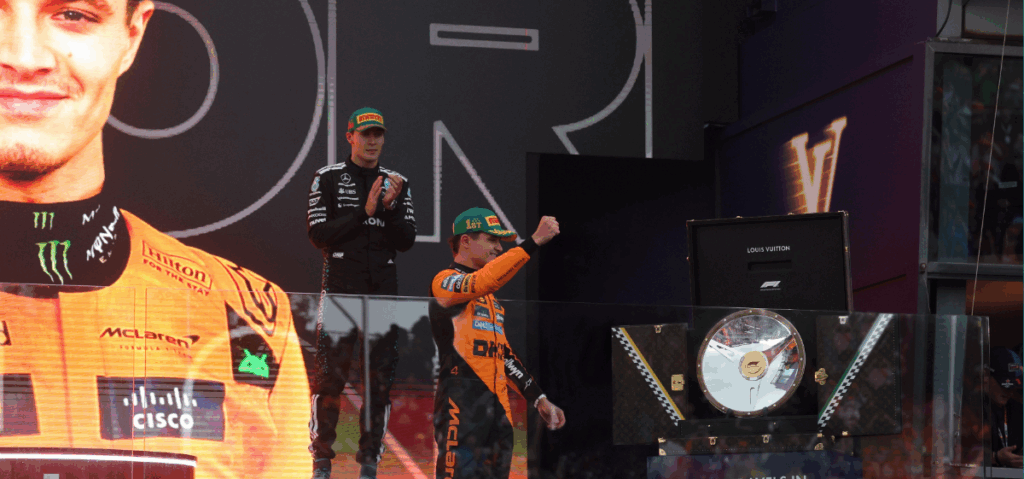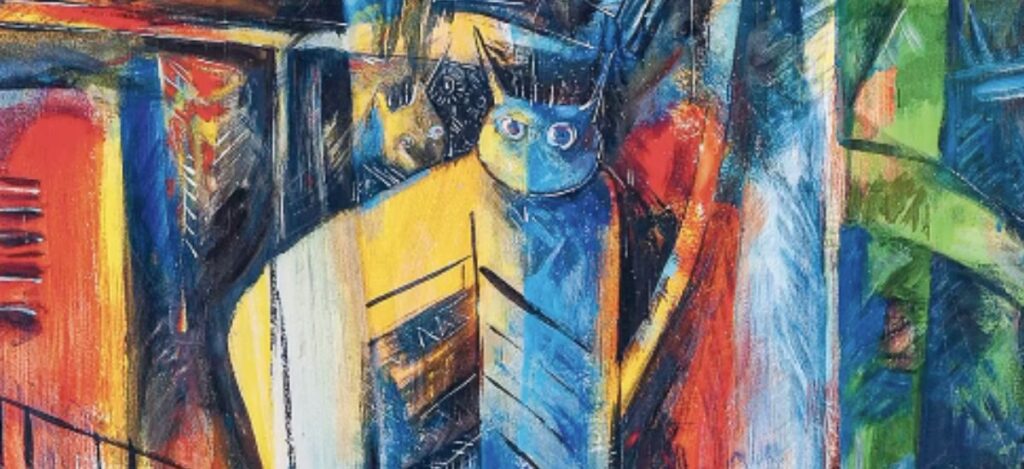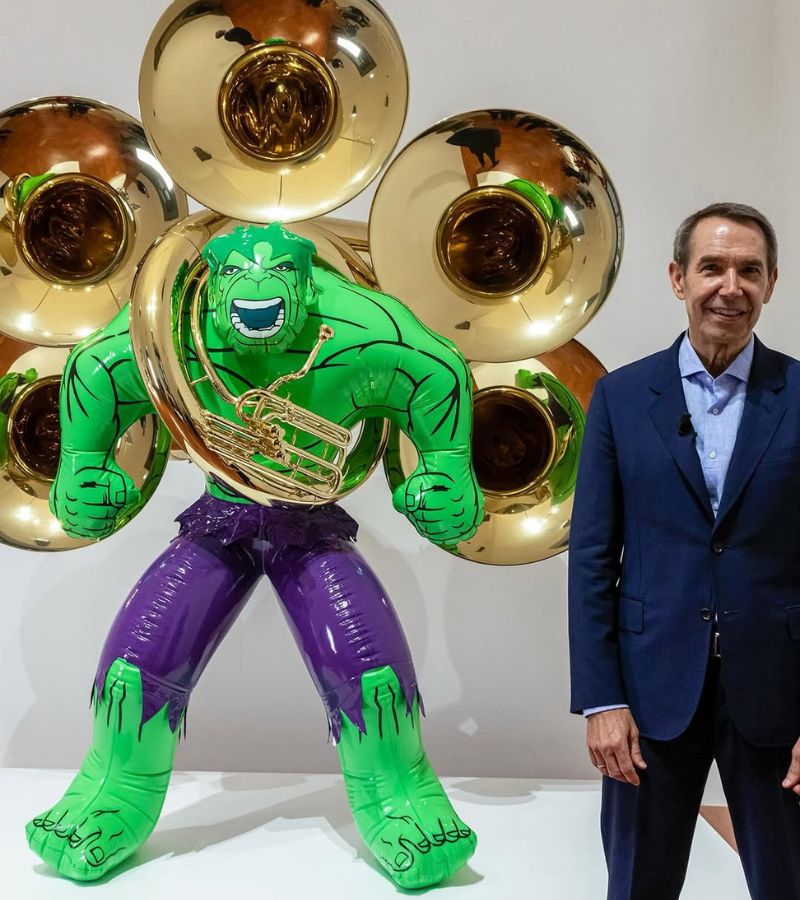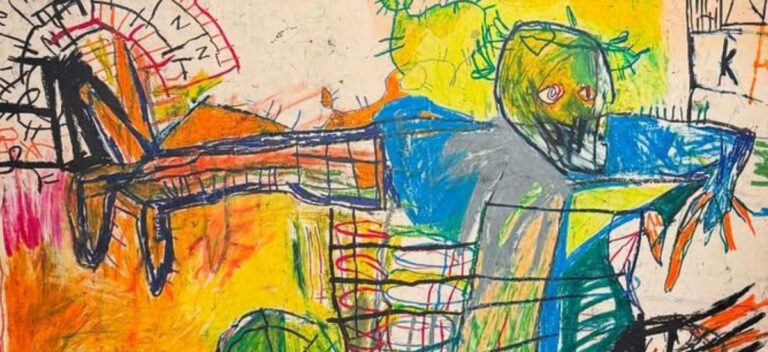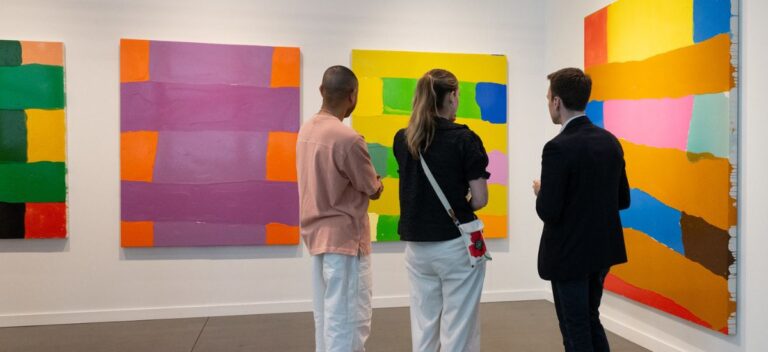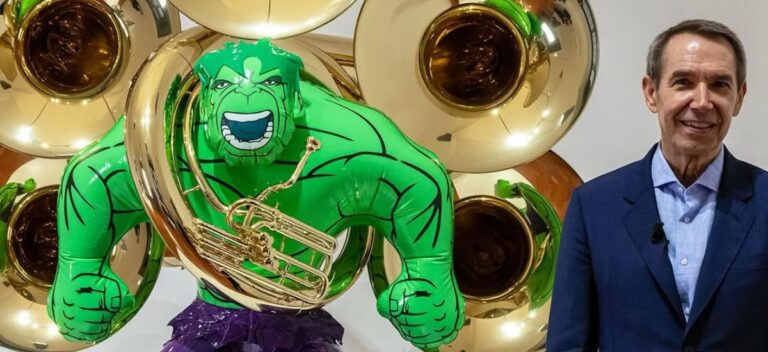Jeff Koons is back with Gagosian—and the art world is watching closely. After a high-profile departure and brief stint with Pace Gallery, the artist reunites with Gagosian for a solo presentation at Frieze New York 2025.
This marks Koons’s first solo showing with the gallery in nearly four years and is set to dominate conversation at this year’s fair.
Running May 7–11 at The Shed, the booth features three major sculptures from Koons’s Hulk Elvis series:
Hulk (Organ) (2004–2014)
Hulk (Tubas) (2004–2018)
Hulk (Dragon and Turtle) (2004–2021)
These works are staged against a custom vinyl backdrop adapted from his 2007 painting Triple Hulk Elvis III, creating a highly theatrical display that underscores Koons’s flair for precision and spectacle.

